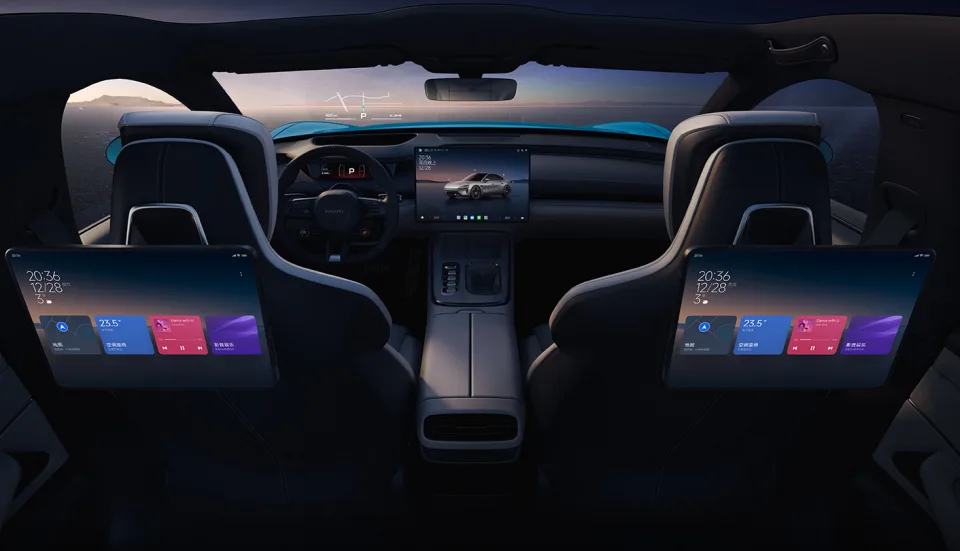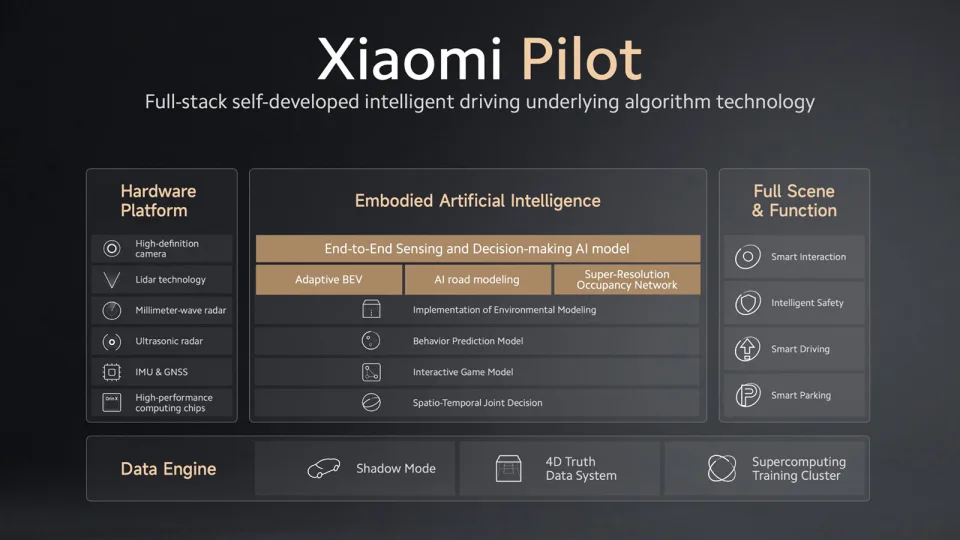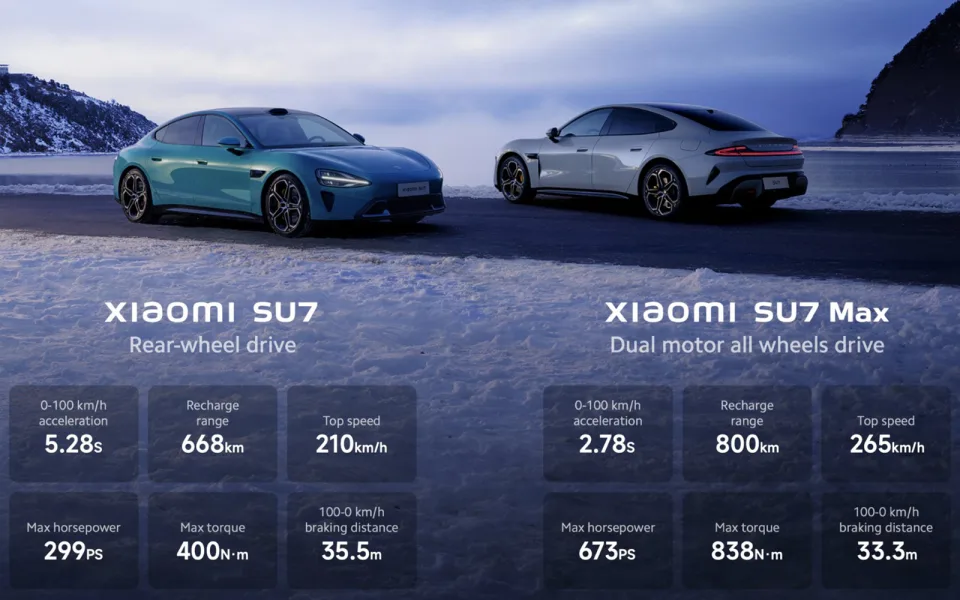Additionally, it is the creation of former Mercedes-Benz and BMW designers.
With the launch of its very first electric vehicle, Xiaomi, a Chinese company that was once known for producing smartphones at inexpensive prices, is now seeking to make an even larger sensation. The Xiaomi SU7, which is pronounced “soo-chee” in Chinese, is a sedan that was introduced earlier today at an event in Beijing. It is based on the company’s very own Modena Architecture and features HyperEngine electric motors that can reach speeds of up to 21,000 revolutions per minute. Additionally, the chassis is stamped by the company’s die casting machines with a clamping force of 9,100 tonnes, which is reportedly capable of surpassing Tesla’s clamping force. A single-motor rear-wheel-drive SU7 and a dual-motor all-wheel-drive SU7 Max will be the two variants that will be available for purchase in this series of automobiles.
A few more months will pass before Xiaomi makes an announcement regarding the prices, but the company has already asserted that the SU7 Max has a range of up to 800 kilometres (497 miles; according to China Light-Duty Vehicle Test Cycle, also known as CLTC), and that it can accelerate from 0 to 100 kilometres per hour in just 2.78 seconds. Both of these claims appear to be superior to those of Tesla’s Model S and Porsche’s Taycan Turbo. This is in part due to the large 101kWh 800V high-voltage platform that is offered by the battery manufacturer CATL. This platform provides a range of 220 kilometres with just a five-minute charge, or 390 kilometres in ten minutes, or 510 kilometres in fifteen minutes. It is important to note that the base model is only capable of supporting 400V charging for its smaller 73.6kWh battery, which has a range of up to 668 kilometres or 415 miles.

In order to bring this initiative to fruition, Xiaomi recruited skilled professionals from the automotive industry. Particularly noteworthy is the assertion made by CEO Lei Jun that Tianyuan Li, who had previously worked on BMW’s iX series and iVision prototypes, made an offer to join Xiaomi’s auto design team. In addition to Li, James Qiu, who had previously worked on the design of Mercedes-Benz’s Vision EQXX, joined the team. After some time, they decided to hire Chris Bangle, a seasoned BMW employee, to serve as their design consultant.
At a height of 1,440 millimetres, a width of 1,963 millimetres, and a length of 4,997 millimetres, the SU7 is about equivalent in size to the BMW 5 series. The distinctive “aqua blue,” grey, or olive green are the three colour options that are available to you. In his presentation, Lei emphasised the trunk capacity, which is 517 litres in the back and 105 litres in the front, as well as the leg room, which appears to be rather large.
During the unveiling event, Lei brought attention to particulars such as the “water droplet” head lamps, each of which resembled the Chinese character for “rice” (which is the “mi” in “Xiaomi”), as well as the halo rear brake light that was composed of 360 LEDs. The executive also mentioned that his team decided to go with the door handles that were only partially hidden despite the fact that the knobs that were more flush were reportedly more difficult to use in cold weather.

In accordance with what Xiaomi had hinted at earlier, the SU7 comes equipped with a HyperOS in-car entertainment system. This system is driven by Qualcomm’s Snapdragon 8295 CPU and can be activated in only 1.49 seconds. Through the use of the 16.1-inch 3K central screen, you are able to access your media, adjust your seats, and even operate your Xiaomi appliances. Additionally, you have the option of mounting Xiaomi Pad tablets on magnetic ports (with a maximum output of 22.5W) behind the two front head rests. For a more smooth experience, you can even cast the screen from your Xiaomi phone to the central screen, which allows you to multitask with up to three split windows. The user interface is located on the central screen. When it comes to audio and visual pleasure, it will be complimented by the 23 Dolby Atmos speakers situated within the device itself.
Additionally, Lei discussed the possibility of opening up the Xiaomi CarIOT ecosystem to third parties. One example of this would be a smart booster car seat that would alert you if the seat belt is not properly fastened within the vehicle. Along with support for wireless CarPlay and AirPlay connectivity, as well as iPad mounting for rear passengers, the executive went on to say that even iPhone users are able to take advantage of some of the features that are available in Xiaomi automobiles.
Xiaomi, much like Volkswagen, is aware that car owners still prefer to have some physical buttons. As a result, the company has retained a few buttons for climate control, in addition to two additional buttons: one for toggling the spoiler (Lei stated that this is primarily for showing off), and one for adjusting the body height (to avoid scratching the bottom, if it is necessary). In addition, you have the option of purchasing a row of buttons that are positioned beneath the primary display.

The Xiaomi Pilot platform, which is powered by up to two NVIDIA Drive Orin processors (the standard model only has one), as well as an array of sensors, will enable the SU7 to have autonomous driving capabilities as well. These include a Lidar that is installed on the top of the vehicle and has a visual range of up to 200 metres and pixel precision of down to 0.1 metres. The latter metric allows for improved detection of objects that are thinner and smaller. Through a series of video demonstrations, Xiaomi demonstrated that the SU7 was capable of navigating through a busy live street that contained a variety of obstacles, performing valet parking on its own, and even parking itself in a robotic vehicle park that had limited space. Although Xiaomi is a firm based in Beijing, the company asserts that the sensors of the SU7 are able to function in both snowy and rainy environments.
Lei also mentioned that his organisation has the objective of completing tests of autonomous driving in one hundred cities across China by the end of the year 2024. However, it is not obvious when the local authorities would begin allowing autonomous driving on a statewide scale.
In addition to hints about imminent software updates, Xiaomi also hinted at its next HyperEngine V8s, which will have a record-breaking 27,200 revolutions per minute. These V8s will be housed in a more robust silicon steel chassis to ensure that the motor remains under control. It appears that technology is currently ready for mass manufacturing, and there are plans to incorporate it into automobiles by the year 2025. After that, the business continued to tease with a next-generation electric motor technology that was built on carbon fibre. This technology is rumoured to be capable of a staggering 35,000 revolutions per minute, but it is not expected to be available any time soon.

Xiaomi has not yet disclosed the prices for the SU7 series of products; however, Lei has already hinted that the costs will be high, which is, of course, a subjective assessment. We will find out in a few months, and we expect that by then we will also know about availability outside of China; but, we would not count on a launch in the United States occurring any time soon, assuming a launch ever occurs at all. In the meantime, you may purchase the Xiaomi Watch S3 eSIM, the Xiaomi 14, and the Xiaomi 14 Pro smartphones in their limited edition colours, which might be either olive green or aqua blue. These colours are designed to complement the impending SU7.

